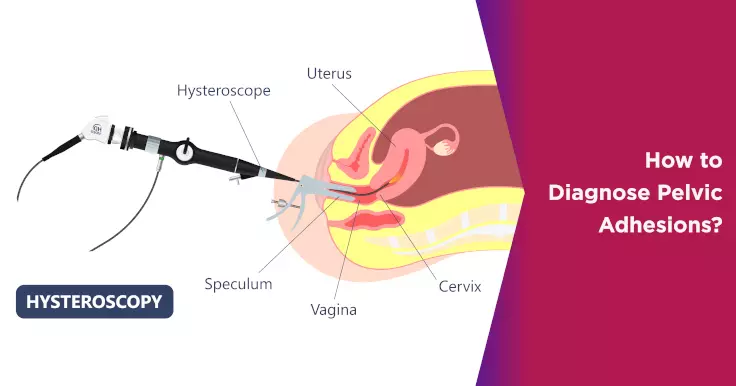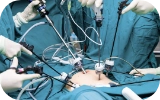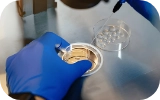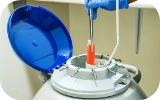How to Diagnose Pelvic Adhesions: A Guide

Millions of women who complain of chronic pelvic pain, painful intercourse, pelvic tenderness or infertility are more often than not victims of pelvic adhesions. Although these are some of the most common symptoms of pelvic adhesions, doctors consider it difficult to diagnose this issue.
Pelvic Adhesions Reasons
Pelvic adhesions are nothing but a band of scar tissues in the pelvic area of a woman that stick the organs of the pelvis together, causing acute pain and swelling. Often, pelvic adhesions occur due to a pelvic infection, pelvic inflammatory disease (sometimes tubal infections caused due to a sexually transmitted disease like gonorrhoea, endometriosis, bowel obstruction, or as a result of previous surgery (removal of ovarian cysts, for example).
Other major causes of such adhesions include appendicitis, abdominal, rectal or vaginal surgical procedures, etc.
In a normal pelvis, the cavity is lined by a tissue called peritoneum that protects the outside of the organs of the abdomen and pelvis and does not allow them to stick or bind to each other. In case the organs get stuck to the pelvic wall or other organs due to the damage caused to the tissues in the healing process post a surgical procedure, the patient experiences chronic pain and swelling in the region because of pelvic adhesion.
Diagnosing Pelvic Adhesions
Diagnosis of pelvic adhesions is not easy as they cannot be identified easily in X-ray or ultrasound. Following are the methods doctors follow to diagnose the condition, since the symptoms alone are insufficient for diagnosing this condition:
- Extensively study the medical history of the patient, especially the previous surgeries she has undergone
- A thorough physical examination of the patient
- Special X-rays and ultrasound, blood tests and abdominal CT scan
- Suggest laparoscopy in order to identify the possibility of pelvic adhesions
Pelvic adhesions are a serious problem and require proper diagnosis and treatment from a specialist. In case left untreated, they can also be fatal.
 Infertility Counselling
Infertility Counselling Female Infertility Treatment
Female Infertility Treatment Andrology Treatment
Andrology Treatment Fertility Enhancing Surgeries - Female
Fertility Enhancing Surgeries - Female Fertility Enhancing Surgeries - Male
Fertility Enhancing Surgeries - Male Endoscopy Treatment
Endoscopy Treatment IUI Treatment
IUI Treatment IVF Treatment
IVF Treatment ICSI Treatment
ICSI Treatment Advanced IVF Solutions
Advanced IVF Solutions Embryology
Embryology Vitrification Egg, Embryo, Sperm Freezing
Vitrification Egg, Embryo, Sperm Freezing Preimplantation Genetic Testing (PGT)
Preimplantation Genetic Testing (PGT) Donation Program Embryo / Egg / Sperm
Donation Program Embryo / Egg / Sperm Self-cycleTM IVF
Self-cycleTM IVF

 Self-cycleTM IVF
Self-cycleTM IVF










